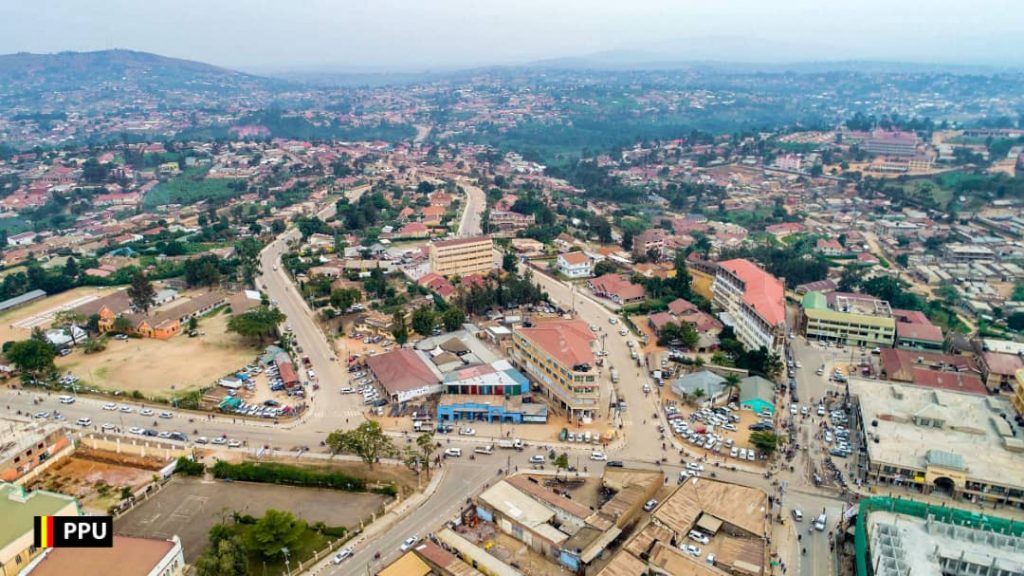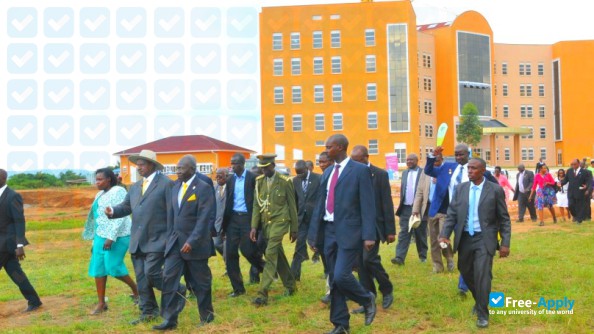
National Resistance Movement party presidential candidate, Yoweri Kaguta Museven, has today campaigned in Mbarara City, Ankole sub-region for his scientific campaigns.
Museveni addressed a select team of NRM leaders and flag bearers from Mbarara to ask them to mobilize support for him ahead of January 2021 polls.
Mbarara City which boasts of multiple achievements under NRM government voted NRM with over 80% in the previous presidential elections.
The president highlight the key achievements the NRM has registered and other development strategies for the area he intends to achieve once re-elected.

Road infrastructure
Mbarara has many roads tarmacked and others undergoing construction and upgrade. Mbarara-Kikagati road is one such road completed in 2011, connecting Mbarara to Kikagati-Isingiro. Currently,the district has a road network of 3,596km of which 507 are district feeder roads and 3,117 are sub-county community access roads.
A total of 139.5km of district feeder roads are in good condition while 365km of district roads are under routine manual (labour-based) maintenance by road gangs. There are 142km are under mechanized routine maintenance.
Within the district is 135km of bitumen roads and 156km of gravel roads maintained by Uganda National Roads Authority (UNRA).
Uganda Support to Municipal Infrastructure Development programme (USMID) has been implemented in two stages. In the first stage, four roads covering a total of 3.494km were constructed in the municipality (now a city). These include Akiiki Nyabongo Road, McAllister Road, Constantino Lobo Road and Bulemba Road. Other works which were done on the roads included surface dressing with asphalt concrete, drainage, walk ways, parking lane, solar street lights, trash cans and side greening.
The second stage covered five roads of Bucunku Road, Mbaguta Road, Bishop Wills Road, Bishop Wills Extension and Makhan Singh Street with a total 2.577 km.
Education
In the education sector, Mbarara district has a total of 197 (UPE) schools with an enrollment of 62,030 pupils and 1,971teaching staff. The district has also provided 1,575 classrooms and 591 teachers’ houses in schools.
The district also has 14 government secondary schools with 9,255 students and 24 privately owned secondary schools. So far, 20 schools (public and private) participate in Universal Secondary Education (USE). Also the district has 6 government aided tertiary institutions with 1,429 students.
The district also boasts of top quality universities, among them being Mbarara University of Science and Technology (MUST), Mbarara University Teaching Hospital and Bishop Stuart University.

Water and Sanitation
The district’s investment in water supply infrastructure include 14 gravity flow schemes with 1,039 public tap stands, 397 protected spring wells, 120 deep wells-boreholes, 19 water for production dams and 8valley tanks.
Access to safe and clean water has increased in Mbarara district. The safe water coverage is now at 65.9% in the rural areas and 95.7 % in the urban up from 45% in 2000. Out of the district population of 445,600 at least 183,292 (excluding city residents) have access to safe water.
Health
Mbarara Regional Referral Hospital is a government hospital which is affiliated with the medical school of the Mbarara University of Science and Technology, one of the four medical schools in Uganda. The hospital is staffed by senior professional doctors and medical students. The hospital also acts as a teaching hospital for nursing students from Bishop Stuart University.
Mbarara hospital also has a bed capacity of 608 with qualified specialists and consultants. In January 2011, President Yoweri Museveni laid the foundation stone at the hospital to mark the renovation, rehabilitation, and expansion of the hospital and transform it into a National Referral Hospital.
There are several health centre IVs, health centre IIIs and health centre IIs in the district.
Agriculture
Agriculture extension services have been reformed to promote services to farmers on high yielding and commercial enterprises. The government has provided crop, animal and fisheries husbandry extension services. This has been done through government Programmes such as Plan for the Modernization of Agriculture (PMA), NAADS and Operation Wealth Creation. These programmes have key components of research, national advisory services, agro processing and marketing. The purpose is to transform households to improve food security, nutrition and stabilize incomes. The government has also improved access to agricultural extension services and productivity by focusing on agribusiness, reduction of post-harvest losses and marketing, targeting women and youth.
Under Operation Wealth Creation (OWC), working with partners since 2014, distributed to farmers: 1,137,882 coffee seedlings; 10 tons of improved bean seed; 10 tons of improved maize seed; 8,049 mango seedlings; 40 in-calf Friesian heifers; and 3,890,000 tea seedlings.
